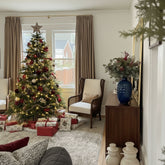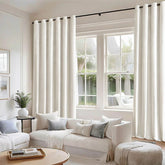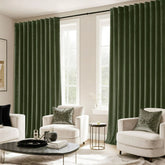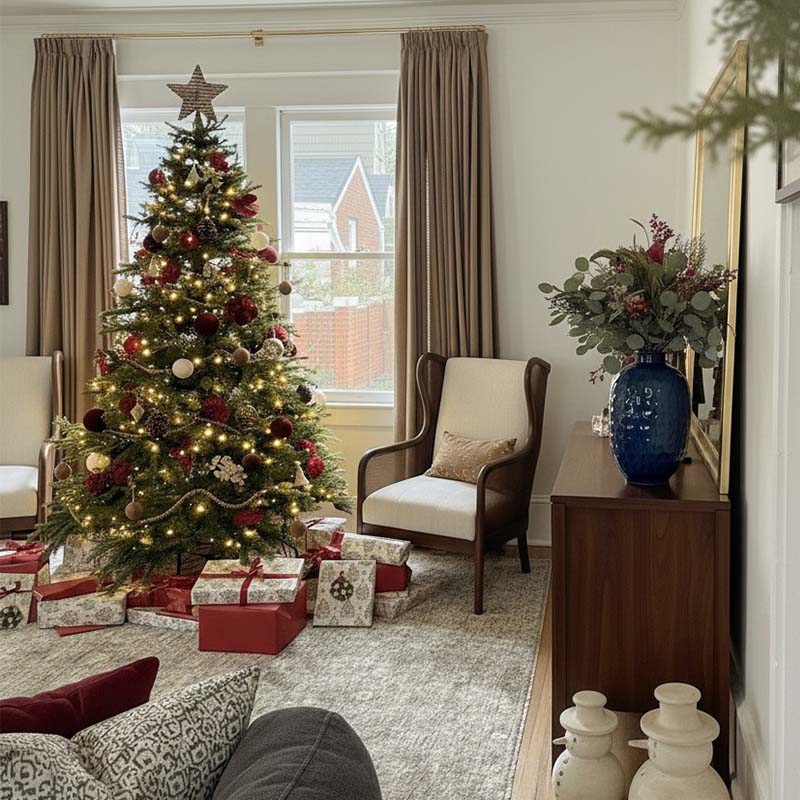Draping Your Space: Curtain & Drape Trends for Quiet Luxury or Biophilia
Quiet Luxury: Understated Style for Your Windows
Quiet Luxury isn't a flash-in-the-pan trend; it's a commitment to timeless quality. It’s the art of letting your home look incredibly chic without shouting about it. For curtains and drapes, this means quality over quantity and a focus on impeccable tailoring.
The Fabric: It's All in the Feel
The secret to Quiet Luxury drapes lies in the fabric's weight and texture.
Linen and Linen Blends: This is the current champion. Look for heavy, Belgian flax linen in natural tones. Its slightly rumpled texture drapes beautifully and signals unforced elegance. Retailers often offer this with custom sizing (like Pottery Barn's or Curtarra's linen collections).
Velvet: For a richer, more formal touch, choose a dense, uncrushed velvet. Key colors are deep, muted tones like Charcoal, Navy, or Warm Beige. Velvet's thickness provides excellent insulation and noise reduction—a practical luxury.
Wool and Silk: These are investment fabrics. Wool provides a warm, substantial drape, while raw silk adds a subtle, non-shiny sheen that catches the light beautifully.
Color and Hardware: The Muted Palette
Stick to colors that anchor the room, not dominate it.
Neutrals are King: Think Ivory, Taupe, Oat, Soft White, and Pale Khaki. These shades blend with the walls, creating an expansive, serene feel.
The Best Hardware: Skip flimsy rods. Choose substantial, high-quality finishes like brushed brass, matte black, or classic polished nickel. The heading style should be simple and tailored—French Pleat or Tailored Pleat are classic choices that ensure the fabric falls in an elegant, even wave.
Achieving the Custom Look
Quiet Luxury drapes should look perfectly fitted.
Hanging High and Wide: Always mount your rod 6-12 inches above the window frame and extend it 10-14 inches beyond the frame on each side. This visually enlarges the window and ensures the full glass area is exposed when the drapes are open.
Layering: Combine a soft, translucent linen sheer (to filter daytime light) with a heavy, lined linen or velvet panel (for privacy and night-time depth). This layering is functional and instantly reads as high-end.
Biophilia: Nature's Touch in Home Decor
Biophilia is all about fostering a deeper connection to nature indoors, aiming to reduce stress and improve well-being. Your curtains should facilitate this connection, primarily by controlling natural light and introducing organic textures.
Prioritizing Light and Air
Biophilia advocates for maximizing natural light.
Sheer Fabrics: These are essential. Choose sheer or semi-sheer curtains made from gauzy cotton or linen blends. They diffuse harsh light into a soft, glowing atmosphere without blocking it entirely.
Unobstructed Views: Ensure your drapes can be drawn fully back, leaving the maximum amount of glass exposed to the view outside. Minimalist rod styles help keep the focus on the window itself.
Textures and Patterns
The sensory experience of the fabric is key to connecting with nature.
Natural Textures: Select fabrics with a visible, tactile weave—think slub linen, cotton canvas, or woven hemp. These textures evoke elements found in the natural world.
Nature-Inspired Hues: Integrate colors from the outdoors. Popular choices include Sage Green, Forest Green, Earthy Brown, Soft Sky Blue, and Terracotta.
Organic Patterns: If you use a pattern, choose one with a flowing, non-linear, or botanical motif (subtle leaf or floral embroidery, abstract organic shapes). Avoid harsh geometrics.
Curtains for Wellness
Biophilic drapes should contribute to a healthy home environment.
Breathable Materials: Natural fibers like linen and cotton are breathable and help promote healthy airflow, which is a core tenet of biophilic design.
Gentle Movement: Drapes that move gently with an open window allow for the "restorative process" of nature to be felt inside, enhancing the room's tranquil ambiance.









